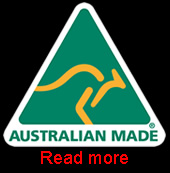Broad Spectrum Virucidal Disinfectant

A virucide is any physical or chemical agent that deactivates or destroys viruses. This differs from an anti-viral drug, which inhibits the proliferation of the virus. When using a virucide follow instructions on the label for safe, effective use. Virucides are intended for use on surfaces, not humans. Virucides are currently being used as cleaning agents in to help stop the spread of COVID-19.
• Unique formulation
• Effective against a broad spectrum of disease-causing organisms.
The broad-spectrum formulation of ViralFX™ is unique. No other disinfectant has the same powerful composition or extensive portfolio of performance and safety testing data. It combines application flexibility with broad spectrum efficacy, on hard surfaces, and in the face of organic challenge. These qualities make ViralFX™ the disinfectant of choice for use in medical facilities, pathology and biosafety containment laboratories, treatment salons and aged care facilities.
Proven Broad Spectrum Efficacy Independently proven highly effective against:
• over 100 strains of virus in 22 viral families
• over 400 strains of bacteria
• over 60 strains of fungi and yeast using a wide variety of contact times, temperatures and organic challenge level

Safety Profile
ViralFX™ has fewer handling and use constraints than many other disinfectant products and is not classified as harmful or a sensitiser in both powdered form and in-use dilutions, in accordance with APVMA (Australian Pesticides and Veterinary Medicine Authority) on the classification and labelling of chemical preparations.
Environmental Profile
ViralFX™ oxygen-based chemistry contains simple organic salts and organic acids and the active ingredient decomposes by a variety of routes within the environment, in soil and water, breaking down to form the naturally occurring substances, potassium salts and oxygen. The major organic components are classified as readily biodegradable according to OECD and EU tests. ViralFX™ is not classified as R53*. Independent studies have shown that diluted ViralFX™ should not, when used as directed, pose any threat to sewage treatment facilities.
*may cause long term adverse effects in the aquatic environment.
Mode of Action ViralFX™ oxidizes key structures and compounds, such as proteins, leading to widespread, irreversible damage and subsequent deactivation/ destruction of the microorganism.
There is no evidence to suggest that bacterial disease-causing organisms develop resistance towards ViralFX™ as opposed to some other disinfectant types.
Introduction
In the United States, virucidal disinfectants used on environmental surfaces are regulated by the Environmental Protection Agency (EPA) under the Federal Insecticide, Fungicide, and Rodenticide Act (FIFRA).
The EPA regulates disinfectants and sanitizers as pesticides, often referring to them as "antimicrobial pesticides." Before a disinfectant can be sold in the U.S. it must first be registered with the EPA, as well as with all 50 states. To register a virucidal disinfectant, companies must submit chemical characterization, safety, and efficacy data to the EPA, as well as pay registration fees. Efficacy data should be generated in compliance with Good Laboratory Practice Regulations (GLP).
Virucidal Efficacy Testing is Different:
Disinfectant Testing Basics:
The EPA currently only recognizes "hard surface carrier" methods for substantiation of virucidal efficacy claims. These methods consist of a non-porous carrier (typically glass) being inoculated with the selected virus, dried, and then treated with the disinfectant. Virucidal hard surface carrier methods are quantitative, meaning that percent and log reductions are calculated by determining the TCID50 (50% Tissue Culture Infective Dose) per carrier before and after treatment with the disinfectant. The disinfectant must demonstrate complete inactivation of the virus down to the limit of detection of the assay, or (if cytotoxicity is observed) a ≥ 3.00 log10 reduction (99.9%).
Study Conduct and Parameters:
There are two main viral morphologies - enveloped and non-enveloped. Non-enveloped viruses consist of genetic material surrounded by a hard protein coat. Enveloped viruses have an additional lipid layer encompassing their protein coat. The limited sensitivity of non-enveloped viral components means that these viruses can persist in an infectious state even when exposed to harsh environmental conditions - including exposure to UV or relatively high temperatures.

Evaluation:
Virucidal efficacy was evaluated for four recently available disinfectants:
- Chlorine dioxide
- Potassium peroxymonosulfate (ViralFX™)
- Quaternary ammonium compound (QUAT) and
- Citricidal (grapefruit extract)
Sodium hypochlorite (3%) and tap water were used as positive and negative controls respectively. Feline herpesvirus, feline calicivirus, and feline parvovirus were exposed to the manufacturers' recommended dilutions of the evaluated disinfectants.
Both chlorine dioxide and potassium peroxymonosulfate (ViralFX™) completely inactivated the three viruses used in this study.
The quaternary ammonium compound and citricidal evaluated in this study were not effective against feline calicivirus and feline parvovirus.
Reference:
National Center for Biotechnology Information,
U.S. National Library of Medicine8600 Rockville
Pike, Bethesda MD, 20894 USA.
Virucidal efficacy of four new disinfectants.
ww.ncbi.nlm.nih.gov › pubmed







